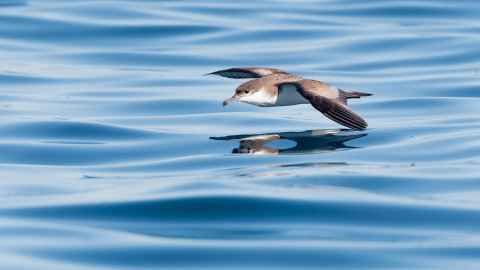Scientists concerned at seabird decline - report
31 May 2019
A major review of seabird populations in northern Aotearoa New Zealand estimates up to 90 percent are at risk of extinction.

Northern New Zealand is a seabird biodiversity hotspot with more than 28 species breeding in the region, five found nowhere else in the world.
Very little is known about the status of, and threats to, many of these birds, says the Northern New Zealand Seabird Trust report.
“We must first understand what threats these seabirds are up against before we can establish a baseline from which to work on researching and conserving them,” says lead author Edin Whitehead, a doctoral student at the University of Auckland.
Broadly, threats to seabirds are categorised into six major areas: 1) Invasive species, 2) fisheries, 3) pollution, 4) climate change, 5) disease, and 6) direct human impacts (disturbance & coastal development).
The report highlights the need for rapid action to mitigate these threats.
“Some seabird species we have really only just discovered, such as the New Zealand storm petrel breeding on Te Hauturu-o-Toi/Little Barrier Island,” says report co-author Chris Gaskin, project coordinator of the Trust.
“It’s quite possible that if the eradication of rats and cats on the island had not happened, we may never have known they were there.”
Some of the most vulnerable seabirds include black petrels, threatened by fisheries by-catch, and the fairy tern, New Zealand’s most endangered bird, down to around a dozen breeding pairs restricted to an area between Whangarei and Auckland. The tern is intensively managed during the breeding season, its population directly threatened by human impacts.
While some threats to seabird populations are well known, such as introduced mammalian predators and fisheries, others are only just emerging, such as climate change, pollution (especially plastic) and disease.
“Although there has been some progress in eradicating invasive species from islands to restore seabird populations, this isn’t enough when they are facing multiple threats both on land and at sea,” says University of Auckland Associate Professor and report co-author James Russell.
The report is published by the Northern New Zealand Seabird Trust with support from the Hauraki Gulf Forum and Foundation North’s Gulf Innovation Fund Together initiative. It is being released at the Birds New Zealand (Ornithological Society of NZ) conference in Wellington this weekend (9:30am Sunday, 2 June morning session).
Media contact
Anne Beston | Media adviser
DDI 09 923 3258
Mob 021 970 089
Email a.beston@auckland.ac.nz